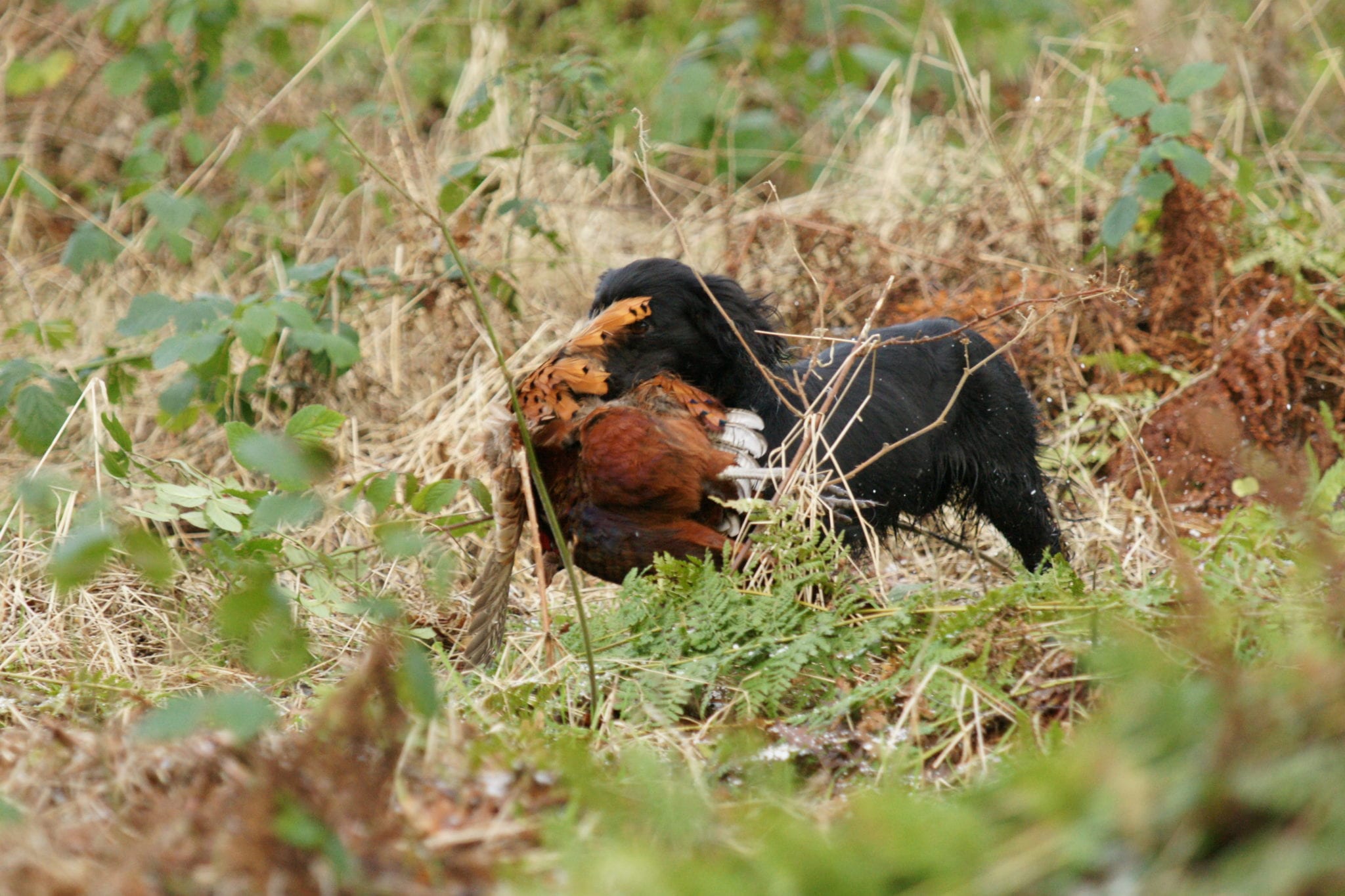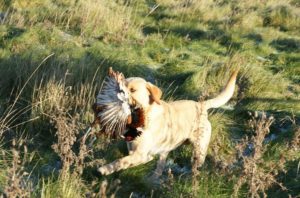Working dogs ~ The Canine Athletes
Blog , +3
September 1, 2017

Feeding the Performance or Working Dog
Why should we pay more attention to our working dogs diet?
Many working dogs are essentially canine athletes trained for speed, endurance and discipline – with the added advantage that they enjoy human companionship! Feeding a special diet all year-round can keep dogs in peak performance condition and help prepare muscles and cardiovascular systems for explosions of energy use and post-exercise replenishment.
Working dogs need more protein- the protein helps with muscle repair & recovery
Working dogs need more energy and protein in a concentrated form in order to maintain peak performance and condition. This means that the energy density and digestibility of their diet must be higher than that for normal maintenance in pets in order to avoid wasting valuable energy reserves in digestion itself. However, simply feeding more of a standard adult food is not good enough. Feeding a working animal can be likened to feeding a performing athlete. As the athletic demands increase for the dog’s performance, so do the physical demands on the dog’s body. In order to meet these physical demands the dog must have additional energy. Without this additional energy in the right form the dog’s body condition and the ability to achieve the demands required of him on a regular basis will decrease. A properly formulated diet provides all the nutrients in the correct proportions to ensure that there is no excess or deficiency and that the energy density is optimised to meet the required performance without the need to over or underfeed to control body weight.
Daily energy requirements vary- so try switching your working dog to Field & Trial Maintenance in the off season.
Daily energy requirements can be highly variable, and are directly related to the amount of work being done, and the condition and training of the dog. Ambient temperature, psychological stress and geography are all environmental factors that may influence nutritional needs of the busy working dog. Probably unsurprisingly, it is environmental temperature which can have the greatest effect – increased environmental temperature (particularly adding humidity into the equation) can impact on a dog’s ability to work by negatively affecting food intake and thus the ability to meet energy requirements. A lower environmental temperature increases energy expenditure which can increase energy requirements by as much as 50%. Stress in the form of intense physical exertion, weather extremes and psychological strain as well as geographical factors – elevation above sea level and changing elevations throughout a course as well as working in sand or tall grass – may also have a direct effect on energy requirements in order to meet the increased workload.
Fat is important for working dogs, it helps provide that extra energy on a cold winters day on the last drive of a snowy shoot.
Energy is derived from the protein, fat and carbohydrate in the food – the proportions of which depend upon the required activity level. Human athletes derive much of their energy from carbohydrates whereas dogs have a very low requirement for carbohydrates and the preferred fuel for their performance is fat.
Fat also helps in injury prevention, an essential key factor with gundogs considering the dangers they sometimes face in the field.
Dogs that are fed a high fat diet have increased stamina and maximised energy production resulting in better performance and lower injury rates. Since fats are highly digestible, are very palatable and contain twice the energy of protein and carbohydrate they are an excellent nutrient for the performance dog. Fats also help to conserve body fluid by reducing the amount of nitrogen that must be excreted – minimising faecal volume and faecal water loss – as well as acting as a metabolic water source. Fats are also needed to assist with the absorption of fat soluble vitamins A, D, E, and K which are needed to maintain a healthy animal. Typically fat content of a performance dog diet should be between 25 to 32%. Carbohydrates shouldn’t be ignored though as they are needed to replenish glycogen, the stores of muscle carbohydrates. Along with providing calories, fat is the source of one of the main building blocks of the body – fatty acids. Dogs rely more heavily on free fatty acids for energy generation at all exercise levels than people. Although there are different types of fatty acids, the most common are the omega-6 and omega-3 fatty acids. Omega-6 fatty acids work to create the inflammatory response in the body, an essential part of healing and response to injury, whereas omega-3 fatty acids work to counteract the excessive inflammatory response of the body. The careful balancing of both of these nutrients is essential in promoting optimum performance.
Along with providing calories, fat is the source of one of the main building blocks of the body – fatty acids. Dogs rely more heavily on free fatty acids for energy generation at all exercise levels than people. Although there are different types of fatty acids, the most common are the omega-6 and omega-3 fatty acids. Omega-6 fatty acids work to create the inflammatory response in the body, an essential part of healing and response to injury, whereas omega-3 fatty acids work to counteract the excessive inflammatory response of the body. The careful balancing of both of these nutrients is essential in promoting optimum performance.
Protein provides both energy and a source of amino acids to keep the dog’s body and muscles in optimum working condition. Exercise increases a dog’s requirement for protein as the exertion places an additional demand on the dog’s body. Any injury or disruption of muscle tissue will need to be repaired and additional protein will be required for the process. Dogs that are fed a diet of 28 to 32% protein tend to have fewer training injuries, better oxygen uptake, more red blood cells and less risk of training anaemia.
Feeding the correct amount of fat is essential to a working dog to maintain weight.
Also, one major concern with very active dogs is the loss of weight. If busy dogs are not fed the proper levels of protein and fat, it is very likely that they will lose weight. There is some discrepancy among experts as to how many times a day they should be fed, but we would generally recommend at least twice per day or even more often if the dog is losing weight. If weight loss persists a veterinarian may need to explore other causes.


